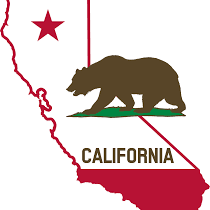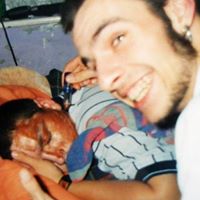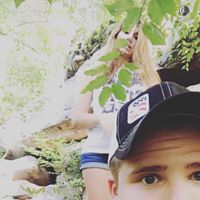Nathan Andrew Wolfe
age ~32
from Hesperia, CA
- Also known as:
-
- Nathan A Wolfe
- Nathana Wolfe
Nathan Wolfe Phones & Addresses
- Hesperia, CA
- Beaufort, SC
- Port Royal, SC
- Victorville, CA
Name / Title
Company / Classification
Phones & Addresses
WOLFE DRAFTING AND DESIGN LLC
Googleplus

Nathan Wolfe
Work:
Hewlett-Packard - Consultant
Limited Brands
Limited Brands
Education:
Ohio State University - MBA, DeVry University - Computer Information Systems
About:
Triathlete, Consultant, Dad, not in that order.
Bragging Rights:
IRONMAN 70.3 Finisher

Nathan Wolfe
Work:
TRICO Contracting, Inc. - Vice President (4)
Education:
Pacific Lutheran University - Geoscience
Tagline:
Go Big or Go home

Nathan Wolfe
Education:
Ohio State University - MBA, DeVry University - Computer Science
Bragging Rights:
IronMan Florida 2012 - 2.4mile Swim, 112mile Bike, 26.2 Mile Run --- Bragging rights for life. I finished !!!

Nathan Wolfe

Nathan Wolfe

Nathan Wolfe

Nathan Wolfe
Tagline:
Disaffected

Nathan Wolfe

Nathan Wolfe
view source
Nathan Wolfe
view source
Nathan Wolfe Harris
view source
Nathan B Wolfe
view source
Nathan Wolfe
view source
Nathan Wolfe
view source
Nathan J Wolfe
view source
Nathan Wolfe
view sourceNews

America is experiencing its worst bird flu outbreak ever: Why aren't we more ...
view source- then mutated and became infectious to humans. But vigorous responses by public-health officials, as well as plain luck, limited its impact. If H1N1 had been more virulent, it would have killed millions of people,the Stanford biologist Nathan Wolfe told me at the time.Maybe tens of millions. Once i
- Date: Jun 15, 2015
- Category: Health
- Source: Google

Virus hunter confronts Ebola
view source- current crisis. He was working for a company that aimed to head off pandemics, such as H1N1 flu and SARS. At San Francisco-based Metabiota, formerly called Global Viral Forecasting, founded by well-known virus hunter Nathan Wolfe, Fair conducted lots of medical diplomacy work for the US government.
- Date: Sep 14, 2014
- Category: Health
- Source: Google

A virus hunter faces the big one: Ebola
view source- foreshadow the current crisis. He was working for a company that aimed to head off pandemics, such as the H1N1 flu and SARS. At San Francisco-based Metabiota, formerly called Global Viral Forecasting, founded by well-known virus hunter Nathan Wolfe, Fair conducted lots of medical diplomacy work for the U.S.
- Date: Sep 14, 2014
- Category: Health
- Source: Google

Possible Pandemic: Is MERS the New SARS?
view source- Does modern life make us more susceptible to modern pandemics? We asked virologist Nathan Wolfe, author of The Viral Storm and a National Geographic Emerging Explorer, to explain what we know and don't know about this deadly new virus. Wolfe, the founder and executive chair of Global Viral and a vis
- Date: May 30, 2013
- Source: Google

MERS death toll rises to 30 IN Saudi Arabia
view source- ses have died, it may be that only sicker individuals are being identified. Individuals who have milder symptoms may not come to hospitals and [may] be less likely to be identified if so, the current 50% mortality rate may be an overestimate, virologist Nathan Wolfe told National Geographic.
- Date: May 30, 2013
- Source: Google

New virus found for deadly haemorrhagic fever
view source- "What this suggests is that the disease may be transmissible from person to person, though it's most likely to have originated from some other source," said Nathan Wolfe, a co-author who heads a California health company, Global Viral Forecasting.
- Date: Sep 28, 2012
- Category: Health
- Source: Google
Classmates

Nathan Wolfe
view sourceSchools:
Calumet Baptist High School Griffith IN 1996-2000
Community:
Connie Pender, Paul Mcgraw, George Brown, Jack Mccoy

Nathan Wolfe
view sourceSchools:
Johnson High School Savannah GA 1983-1987
Community:
Glenda Edwards, Michelle Jones, Charles White

Nathan Wolfe
view sourceSchools:
Quabbin Regional High School Barre MA 1985-1989
Community:
Tammy Gilbert

Nathan Wolfe
view sourceSchools:
The Wellington School Upper Arlington OH 1983-1992
Community:
Julie Berman, Bea Ruben, Janis Joplin, Diane Gregory, Thane Sellers, Amy Wickliff

Nathan Wolfe
view sourceSchools:
Byrd High School Clarksburg WV 1995-1999
Community:
Crystal Baginsky, Margareth Yared

Nathan Wolfe
view sourceSchools:
Frankfort High School Ridgeley WV 1992-1996
Community:
Jason Brooks, Holly Mickey, Jason Hill, Angela Kline, Devon Parsons, Nicole Morton, Jason Twigg, Shawn Mcbee, Rebecca Ketterman, Rocky Burton

Nathan Wolfe
view sourceSchools:
Frankfort High School Ridgeley WV 1992-1996
Community:
Jason Brooks, Holly Mickey, Jason Hill, Angela Kline, Devon Parsons, Nicole Morton, Jason Twigg, Shawn Mcbee, Rebecca Ketterman, Rocky Burton

Nathan Wolfe
view sourceSchools:
Upton Lake Christian School Clinton NY 1987-1996
Community:
Joseph Clark, Linda Chamberlin
Youtube
Myspace
Flickr
Get Report for Nathan Andrew Wolfe from Hesperia, CA, age ~32




















